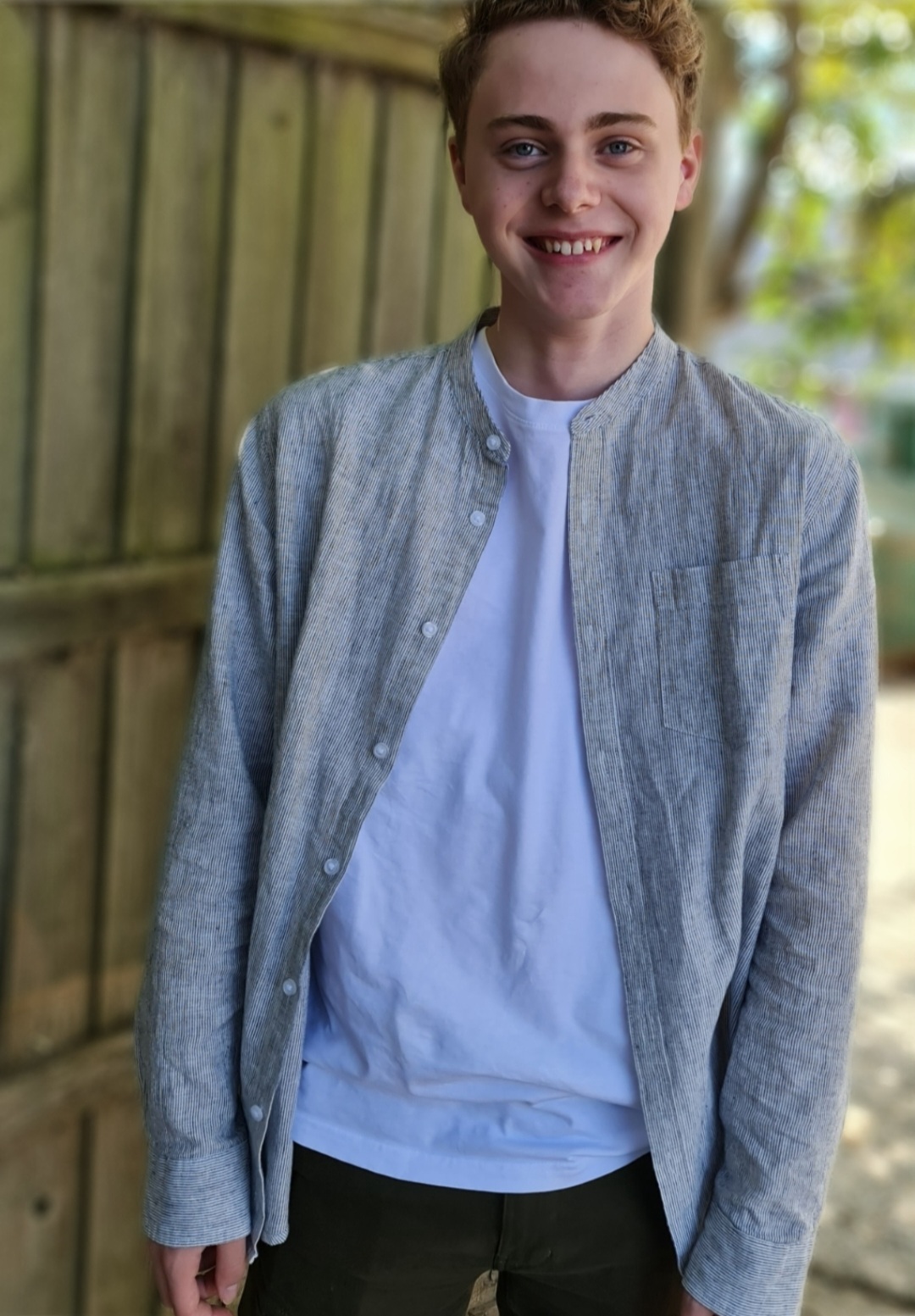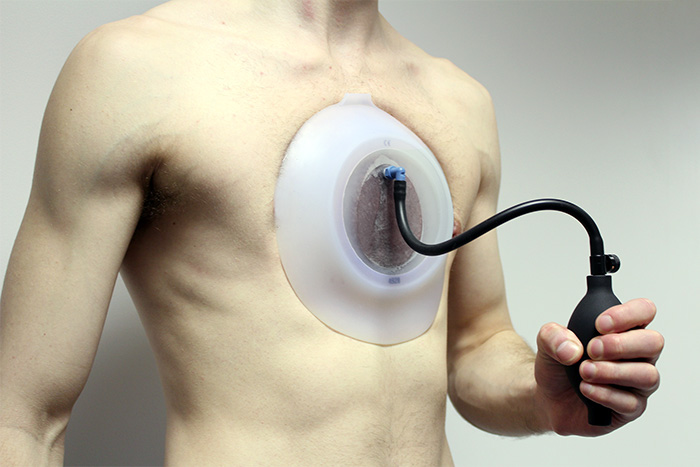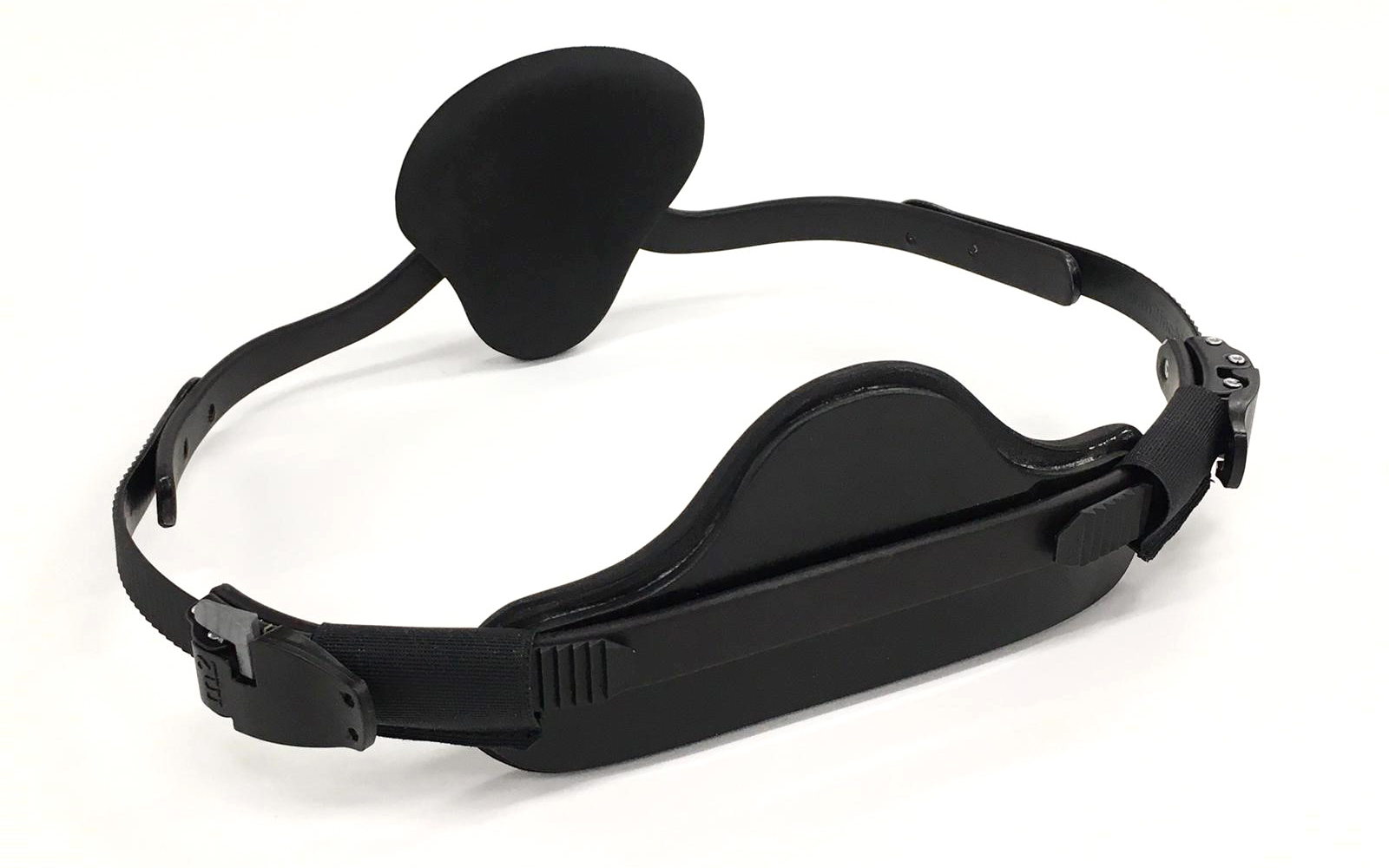
30 August 2022
“When I was nine, I suddenly found myself experiencing what was soon to become long term and recurring pain coupled with an inability to do exercise. Why was this? I'd developed Pectus Excavatum, a condition which causes a sunken chest, and (often) protruding ribs.
Prior to my condition, I was an avid fan of running. However, I was completely unable to do it and constantly found myself completely out of breath. This was sometimes accompanied by nausea, tunnel vision, and extreme pain. Although I simply thought I was unfit, an idea reinforced by most people around me who didn't exactly show much in the way of understanding. My condition actually led to me becoming something of a shut-in. Not that enjoying being indoors is bad, but I hardly ever chose to go outside.
When I found out, about three years later, that I had the condition whilst going to the doctor for something completely unrelated, it was quite a shock. I didn't quite know if I believed it to be perfectly honest. Although it did explain why someone had recently yelled "WHAT IS THAT?!" at me when we were doing swimming at school. However, not really minding how it looked, and still assuming I was just unfit, I decided against doing anything about it. That was, at least, until I started suffering from arrhythmia attacks.
While exercising, I frequently found myself having extremely painful and debilitating attacks, which sometimes resulted in having to go to A&E. At this point I knew it wasn't just a matter of being unfit, there was definitely something wrong. At sixteen I went to the NHS to see if I could get surgery. Despite having a severe case, it seemed that there was little hope that they would fund it. However, they knew about a private, non-invasive alternative provided by the London Orthotic Consultancy. Immediately I was welcomed by a friendly and helpful team, who have remained that way for the entire duration of my treatment. My consultant at LOC, Connor Mumford, has been very reassuring, and has helped me through the process from the second that treatment started.
Although the treatment's main objective is to improve one’s physical appearance, I was keen primarily in the hope that it could help my physical issues. I'm pleased to say it delivered. Through it, I've realised that my frequent torso pain was because my skin was stretched over my ribs, and my exercise problems were because my heart didn't have enough space to expand, both of which are no longer issues. This is likely best illustrated by an experiment I conducted. Before beginning my treatment, I tried running around the corner, and found I quite literally couldn't run for a few metres without problems. Two weeks in, I tried again, and found I still had some problems, but I didn't need to sit down or take any breaks. A month in, I had no issues whatsoever.
It's important, however, to emphasise that the treatment is not magic. Your results are equal to the amount of effort that you put in. It definitely feels like hard work at first, but like any habit, it takes time to become routine. Once you've reached that point, however, you don't even think about it. You can't allow yourself to slack, even if, like me, you're going on a college trip to Thailand.
If you're thinking about having the treatment, I've got two words of advice. Firstly, you have to be in it for you. The team can only help so much, and the end results depend on your level of commitment. Second: no-one cares about how you look with the brace on. If anything, it's a talking point that makes you look interesting. I would recommend telling your friends about it too, that's what I did, and they've all been very understanding.
All in all, I've found the experience to be truly life-changing. If you're anything like me, I'm sure the treatment will be the same. So go for it, and good luck.”
Jonny’s parents – Jonathan and Kari - have obviously been very involved with the whole process and would like to share their views about LOC and its treatment for pectus deformities.
“We were first alerted to the treatment offered by LOC by an NHS specialist, so we were reassured by this independent referral. We warmed to the idea of non-invasive therapy as an alternative to major surgery.
One of our initial concerns was cost as we don't have unlimited funds available. We found the transparent pricing on LOC’s website reassuring, but we still suspected that there might be some unexpected extras that would hit us once we committed. We have been delighted to find since, that the prices shown really are all-inclusive and there have been no additional charges. We have found everyone involved in the process to be empathetic and friendly. We detect a genuine desire to get the best possible outcome for Jonny. We recognise that LOC is a business, but we have never felt like we were involved in a business transaction. We feel like therapy comes first and business comes second.
Connor is always available and happy to help, whether to refine the treatment or adjust/repair/improve the brace. Connor has offered useful advice regarding communicating the therapy to Jonny's friends and peers. Jonny took the advice on board and has taken the view that the brace 'makes him more interesting to his fellow college students, so he has not tried to conceal what he is doing and why. This philosophy has worked really well for him.
Kari: "We have been delighted by the approach by LOC and impressed that there are already positive and meaningful improvements after only a few weeks. We had read that potential patients were concerned about the visual appearance of the rib brace under clothes, there have been numerous occasions this summer when I have had to check that Jonny was actually wearing the brace under his T-shirt. I literally can't always tell".
Jonathan: "Jonny is embracing the therapy and has set himself a fun target of completing the treatment more quickly than anyone else has ever done it. He's treating the brace and the vacuum bell as the means to improve the cosmetic appearance of his chest but he's also using the accompanying physical exercises as a chance to 'get buff' (his words). This all means that he never misses a day and is doing everything he is supposed to do. It is already paying off with a marked improvement in his appearance and fitness levels."
Kari and Jonathan: "Based on our experience to date, we would have no hesitation in recommending the treatment to other parents and to their children. The treatment is not cheap, but we feel it is very good value for money".

Vacuum Bell therapy

LOC's Dynamic Chest Compressor
For patients considering LOC’s non-surgical treatments for pectus carinatum, the initial virtual consultation is FREE with no obligation to proceed. During the consultation, one of LOC's clinicians will examine your chest and general posture.
If the clinician believes that your chest shape will respond using the dynamic remodelling method and that you are willing to commit to the exercise programme, they will take 3D scans of your chest shape. Further appointments will be made for casting and fitting and you will need to attend the clinic for regular reviews.
This depends on several factors; the position of the chest wall deformity, its severity, the flexibility of the chest, the kind of results wanting to be achieved and the age of the person undergoing treatment for pectus excavatum or pectus carinatum.
Early adolescence (roughly between the ages of 12-16 years old) – is an optimum age to start treatment, given that the chest is still maturing, and flexible, permanent correction is more easily achievable. Once bracing treatment is complete and a patient has stopped growing, the deformity will not return. For younger pectus patients, conservative bracing is used to keep a deformity from worsening and can help them to avoid surgery in later life.
For older pectus patients (between the ages of 20 to 30) results can be harder to achieve, as the costal cartilage hardens into the bone as a person matures. Over the years we have successfully treated many adults for both pectus excavatum and pectus carinatum and active adults with flexible chests can expect good results.
Again, this hugely depends on what a patient wants to achieve from treatment; whether that’s avoidance of surgery, improvement in the appearance of the chest shape, reduction in rib flaring etc. All these goals are taken into consideration during your first consultation. While there are no serious health risks of having pectus carinatum or excavatum – beyond the cosmetic – for many patients and parents, treatment outcomes involve improving confidence and self-esteem. During our 2018 Pectus Patient Survey, 92% of pectus carinatum patients surveyed said that treatment had a ‘major improvement’ or ‘an improvement’ on their social life.
You can read the results of our 2018 Pectus Patient Survey and quality of life questionnaire here.
Regular reviews are part of the treatment programme, preferably in clinic with one of our specialist orthotists, or via Skype consultations.
The number of appointments needed will vary from patient to patient but as a general rule, younger pectus patients who are growing at a faster rate will need to be seen more regularly for check-up appointments. This is to ensure that the brace fits well and is guiding the chest into the correct position as growth spurts occur. For other patients, this can be scaled back according to their individual needs and demands.
Regular appointments are beneficial for assessing progress, checking for signs of rubbing and determining whether another brace is needed. Appointments are also good for checking patient compliance to brace wearing and the breathing and exercise programme. At each appointment, we make time for patients to see our physiotherapist to fine-tune their exercise programme and check to see how a patient has been managing with the current programme.
We always advise coming in for appointments whenever you have any concerns about the brace or treatment programme, especially if a brace is rubbing or not fitting correctly. At the London Orthotic Consultancy, we have treated numerous international patients that have benefitted from specially designed braces that leave room to accommodate for growth and that can be adjusted remotely. Follow-up appointments for international patients are conducted via Skype.
This is a very common concern for patients considering treatment; in general, the dynamic chest compressor brace is easy to conceal if you are wearing a loose-fitting shirt for school or work. If you are wearing two chest braces – one for the main deformity and the other for rib flaring – then this may be more noticeable, especially under a t-shirt. Normally loose-fitting clothing will conceal the brace, though it’s likely it will be seen through tight-fitting clothes.
It is really important to continue exercising while going through bracing treatment. Exercise is fundamental to keeping the chest wall flexible. Our treatment programme incorporates a daily exercise routine of around 30-40 minutes of stretching using yoga poses, resistance bands, deep breathing exercises and general muscle stretches. Deep breathing exercises allow the lungs to expand against the chest wall, pushing it outwards.
Exercising with the brace on in the later stages of treatment can also make the chest correction more stable and permanent.
Swimming is one of the best forms of exercise to complement bracing treatment, as the body positions required to swim imitate the resistance band training designed to stretch the chest and increase its flexibility. Some swimming strokes are better for this than others, please check with your clinician. The brace should always be removed for contact sports and for swimming.
For most patients, one brace is often all that is needed to achieve a desired level of correction. They are each designed to last the duration of treatment and accommodate any growth that may occur in that time. Some patients have benefitted from having two braces – one to treat the main deformity and the other to treat rib flaring. For some pectus excavatum patients, having a brace apply pressure to the ribs – in addition to vacuum bell therapy – can greatly reduce the appearance of the depressed sternum area of the chest, forcing it upwards and outwards into a more corrective position.
If you are worried about your chest shape, or your child’s chest shape, then get in touch for a free Skype consultation with one of our pectus specialists who can assess their chest and discuss treatment options. We are always happy to communicate with local GPs, thoracic surgeons and consultants if a patient approaches us for bracing treatment after considering other options.